Blog
The Benefits of Cupping Therapy

Cupping therapy is an alternative medical practice that involves placing glass or plastic cups at various locations on the skin in order to create suction. Its most common and well-documented uses are as a treatment for headache and other types of pain, but some practitioners, past and present, have used it to treat a wide range of other ailments, from acne and varicose veins to allergies, high blood pressure, and anemia [Link]. Michael Phelps is perhaps the most well-known, but not the only, professional athlete, to use cupping therapy to relieve muscle pains. U.S. gymnast Alex Naddour competed in the 2016 Olympics with round, red marks on his arms and back [Link]; these were cupping therapy marks, not a stylized tribute to the Olympic rings. Cupping therapy is not just for celebrities; your local acupuncturist may even offer Chinese cupping services.
History of Cupping Therapy
Chinese cupping therapy is not the only, or even the oldest kind of cupping therapy. The ancient Egyptians created suction by applying cups to the skin more than 3,000 years ago, and ancient Greek physicians including Galen [Link] and Hippocrates [Link]. According to an Islamic hadith, the Prophet Muhammad used a type of cupping therapy as a headache remedy [Link]. The oldest known Chinese cupping text is from the fourth century [Link] and was written by Ge Hong.
Types of Cupping Therapy
Ancient people used to use cupping instruments made of ceramic, animal horns, bamboo, and glass [Link], but not all of these cupping materials are still in use. Cupping practitioners today usually use cups made of glass, plastic, rubber, or silicone. Almost all the kinds of cupping therapy use heated cups, because these create more suction, and the cups are usually left in place for at least five minutes. Dry cupping does not involve breaking the skin; a heated cup is simply placed on the skin to create suction. One type of Chinese cupping that falls into the dry cupping category is fire cupping, in which a flaming cotton ball is inserted into the cup and then quickly removed before the cup is applied to the skin [Link]. Limited bruising cupping follows the same practice as other types of cupping, but it uses silicone cups, which cause significantly less bruising [Link]. Wet cupping, including hijama, the type of cupping therapy used in the Islamic world, involves making a small incision in the skin before applying the cup to create suction. The bleeding associated with wet cupping is usually minor because the cuts are superficial, and the practitioner takes care to avoid cutting veins [Link].
What Are The Uses of Cupping Therapy
People who suffer from chronic headaches or pain, for example, the pain associated with rheumatoid arthritis, tend to use cupping therapy as part of a treatment regimen that can also includes other treatment methods.
Are There Any Risks Associated With Cupping Therapy?
Cupping therapy is fairly safe, as long as you go to a trained health professional. But you could have side effects in the area where the cups touch your skin that include; mild discomfort, burns, bruises and skin infection. [Link]
It is important to note that cupping should not be used on areas of the skin which have ulcers, and pregnant women should not undergo cupping therapy (Chinese Acupuncture and Moxibustion (Revised Edition), Xingnong, Foreign Languages Press, Beijing, China, 1987, p370.)









